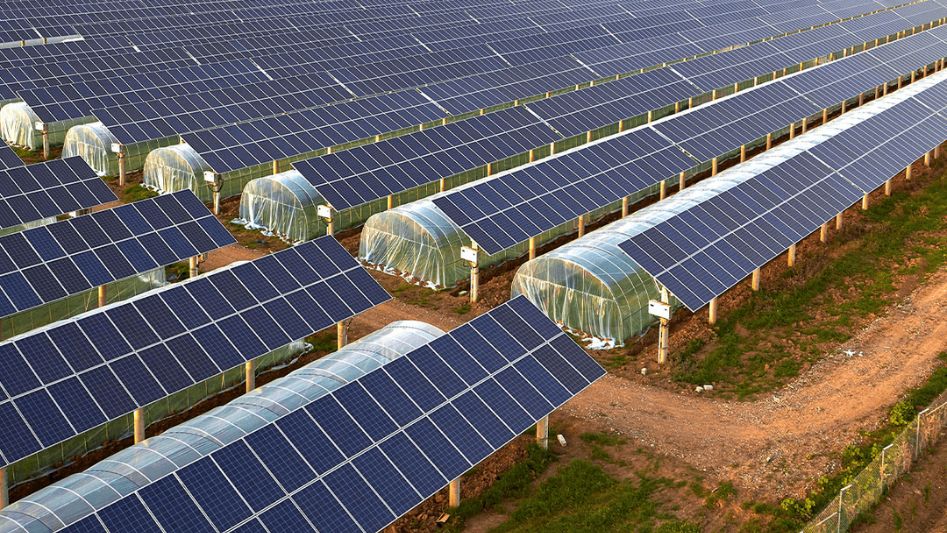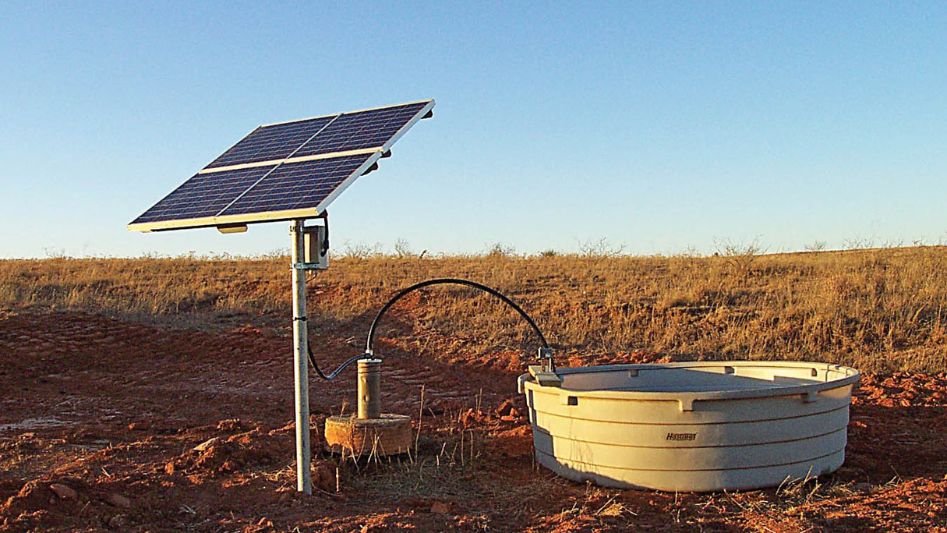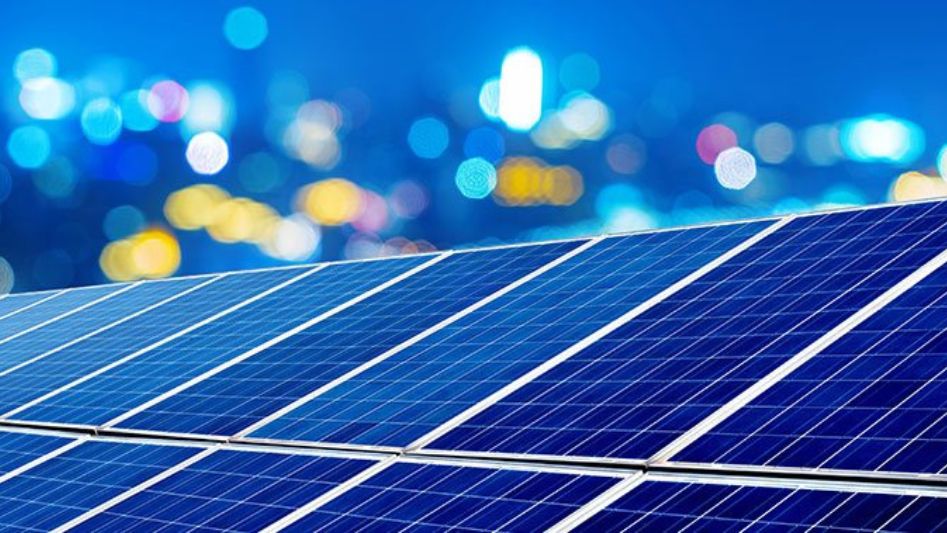Solar panels can be used to produce both electricity and food. Agrivoltaics is a practice that can help solve the problem of food insecurity and clean energy barriers.
Agrivoltaics refers to the practice of installing solar panels in agricultural settings in order to generate both food and power. The method is known by a number of different names in different parts of the globe, including agrisolar, agrophotovoltaics, solar sharing, and PV agriculture.
Many industry professionals are of the opinion that agrivoltaics may help reduce the number of obstacles that stand in the way of achieving food security and transitioning to clean energy. The method is still in its early stages, but it is expected to grow as the solar industry grows over the next few decades.

How Agrivoltaics Works
Agrivoltaics is a technique that includes attaching solar panels to the ground at a higher height than is typical for solar arrays. This frees up the land underneath the panels for use in agricultural crops.
According to the data provided by the United States Department of Energy, rural regions in the United States will account for ninety percent of the solar industry’s development between now and the year 2050. (DOE). The growth of solar energy relies heavily on the intelligent and sustainable use of rural land via methods such as agrivoltaics. It could have less of a negative effect on farming communities and rural wildlife while also making more people accept solar energy.
The solar panels may either generate off-grid power for the farm or grid-tied electricity that can be used by the surrounding neighborhood. The food that is generated beneath the panels may either be used to cultivate crops for sale or give feed and shade for animals that are grazing. Farmers may be able to make money from both the crops they grow and the energy they make if they take part in net metering programs or rent their land to solar developers.
Benefits of Agrivoltaics
Utilizing property for a variety of functions simultaneously offers a number of advantages. One study that looked at the effects of agrivoltaic methods found that the production of the field went up by 70 percent.
Reduced Water Loss, Higher Yields
The provision of shade by solar panels results in a reduction in the amount of moisture that is lost to evaporation from the soil below; one study found that this reduction was as high as forty percent. The shadow that is produced by solar panels may be used for the storage of water, and the water that is utilized for the cleaning of solar panels can subsequently be recycled for use in the watering of crops. The heat stress that is caused by the sun is reduced, and the effectiveness of the solar panels is increased thanks to the vegetation that is growing below them.
A lower amount of water is required to sustain livestock and crops grown beneath the panels. According to the findings of one study, lambs grazing beneath solar panels consumed around 0.9 liters less water per day than lambs grazing in open areas when temperatures increased in late spring. The research also discovered that lamb production in sun pastures was comparable to that in open fields, despite the fact that solar pastures generated 38% less herbage than open fields do. This was due to the better nutritional value of the solar pastures. Even shade-intolerant crops like maize exhibited greater yields due to a reduction in the amount of water lost.
Support for Farmers
There are several dangers that threaten agriculture across the world, including soil erosion, rising sea levels, desertification, and, in the United States, the expansion of urban and suburban areas. The American Farmland Trust estimates that by the year 2040, residential and industrial expansion will have resulted in the loss of around 18.4 million acres of land, which is equivalent to almost the whole state of South Carolina. One of the primary reasons why farmland is sold for development rather than continuing to be farmed is because almost two-thirds of that property is handled by persons over the age of 55, and young people face economic difficulties getting started.
“Smart solar” methods, which include encouraging agrivoltaics, are at the top of the list of suggestions made by the American Farmland Trust. These methods are meant to help the next generation of farmers make more money and farm more efficiently.
Resolving land use disputes
Concerns over the usage of land are often among the most important factors in advancing solar development. When compared to fossil fuels, the amount of land needed to produce one unit of energy from renewable sources is around ten times higher. In addition, solar panels are site-dependent, meaning that they must be installed in locations that receive adequate sunlight. In contrast, fossil fuels can be transported to and burned in locations that are less likely to be affected by human activity or are close to low-income communities and communities of color, whose opinions are frequently disregarded when siting decisions are made.
Solar development may be met with public resistance, which draws the attention of the media and politicians. This is because “distributed energy resources” like solar are visible to a larger audience. A greater dependence on solar energy may also result in “green against green” conflicts, which pit the protection of rural biodiversity against the development of clean energy. These are tensions that may be alleviated by the use of agrivoltaics. When farmland is protected while boosting solar production at the same time, the economic and racial inequality caused by the use of fossil fuels is mitigated.
Agrivoltaic Projects
Although there have been discussions about integrating solar power into agricultural practices as far back as the 1980s, the term “agrivoltaics” and the technique itself didn’t come into existence until the first decade of the 21st century. To this day, the vast majority of agrivoltaic projects are on a microscale and are still in the early stages of research and development. Only a few operations have achieved successful commercialization.

The National Renewable Energy Laboratory (NREL) of the Department of Energy lists over two dozen project sites that are participating in its InSPIRE (Innovative Site Preparation and Impact Reductions on the Environment) program. These sites cover projects ranging from planting wildflowers that are friendly to pollinators to tomato production.
Livestock
Allowing livestock to graze on land that is covered with solar panels is one of the most popular ways that agriculture may be combined with solar power, and it is also the method that has the most potential for increasing the amount of energy generated. This may be done on a wide scale without the requirement for significant agricultural equipment.
Grazing livestock provides a number of benefits, one of which is the ability to regulate the development of plants underneath the panels. Sheep, due to their size, are well suited for browsing beneath panels, although cows may also be accommodated if the panels are elevated to a sufficient height. Solar panels could help save a lot of water, especially when you consider that dairy cows drink an average of 25 gallons of water every day.
Crops
A significant number of agrivoltaic projects furthermore include the cultivation of intensive horticulture (fruits and vegetables) or of cereals and legumes. Solar panels have been placed atop vineyards in several countries, including Italy and India, for instance. Potatoes with a high tolerance to shade are being pushed as a possible development driver for the agrivoltaic industry in Belgium.
Low-bush blueberries grown in Maine, which is located in the United States, have been shown to be ideal for agrivoltaics. A project in Arizona that is located outside of Biosphere 2 cultivates plants such as chard, kale, cabbage, and onions, all of which do well in partial shade. Row crops, fodder crops, and specialty crops are being cultivated by researchers at the University of Illinois at Urbana-Champaign as part of a larger effort to reduce the state’s dependency on maize and soy. This is just one of several ongoing studies.
Challenges of Agrivoltaics
The use of photovoltaics in agriculture is not without its difficulties. The runoff of rainwater from solar panels may change the way water is distributed over a farm, which may have an impact on the development of crops. It is possible for infections or parasites to get established beneath the panels as a result of the increased humidity caused by slower evaporation. And the cost of installing a solar photovoltaic system is a problem for many agricultural businesses. This is probably the most important thing to think about.
It is possible that addressing these problems could help agrivoltaic systems advance, which in turn will improve the food and energy security of communities that embrace this technique.
Conclusion
The term “agrivoltaics” was defined, and its numerous agricultural and electrical applications were described here. Additionally, we have included the designs for the installation of agrivoltaics. And last, we have mentioned the difficulties that are associated with the agrivoltaics technology. We really hope that this essay cleared up any questions or concerns you had about agrivoltaics. You are welcome to post any inquiries that you may have about the agrivoltaics down below.
FAQ
Which kinds of crops are most suited for use with agrivoltaics?
For instance, lettuce is an excellent option for planting that may be used for more than one purpose. Other crop species that are suited to understory development, such as chile-penetrating peppers and certain varieties of tomatoes, may also operate quite well in this environment. According to research conducted at Biosphere, the amount of chiltepin produced increased by a factor of three when it was grown in the shade provided by an agrivoltaic system.

What kind of fuel is used in agricultural operations?
Producing electricity for use on farms as a source of warmth and lighting, as well as fuel, may be accomplished with the help of biomass, geothermal, hydroelectric, solar, and wind power.
Can you place solar panels on agricultural land?
Agricultural buildings are often of a size and shape that allow them to house a significant number of solar panels. Installing rooftop solar panels on the roofs of your agricultural buildings is an excellent way to produce green energy for your farm while simultaneously lowering costs, providing a reliable energy source, and reducing your carbon footprint. This can be accomplished by installing solar panels on the roofs of your agricultural buildings.
You May Also Like
- SOLAR OR WIND ENERGY? DO YOU KNOW WHICH ONE TO CHOOSE IN 2022?
- EVERYTHING YOU NEED TO KNOW ABOUT SOLAR ENERGY
- IS SOLAR ENERGY RENEWABLE OR NONRENEWABLE?
- HOW RENEWABLE IS SOLAR ENERGY? THE UNBELIEVABLE FACTS
- SUPER CONCENTRATED SOLAR POWER: THE NEW INVENTION THAT WILL CHANGE THE WORLD
External Links
- Agrivoltaics: Where Solar Energy Meets Agriculture
- What is agrivoltaics? How can solar energy and agriculture work together?
- Can crops grow better under solar panels? Here’s all you need to know about ‘agrivoltaic farming’
- Agrivoltaics: Combining Agriculture With Solar Power
- Agrovoltaic energy, when agriculture and renewables go hand in hand
